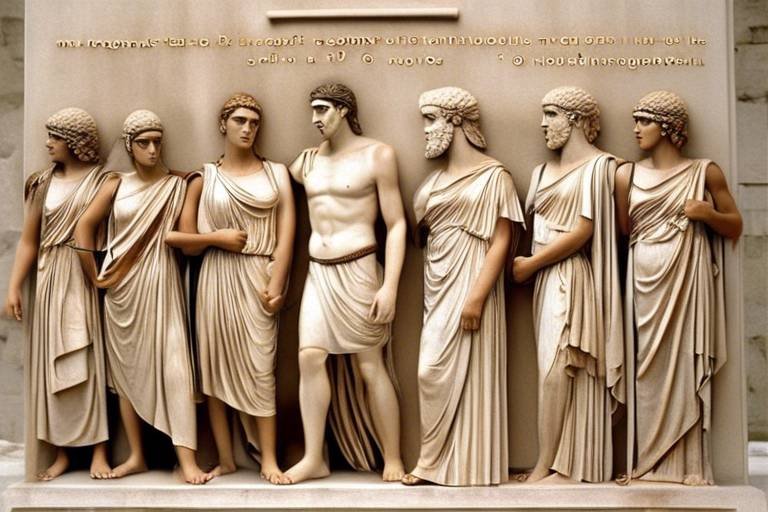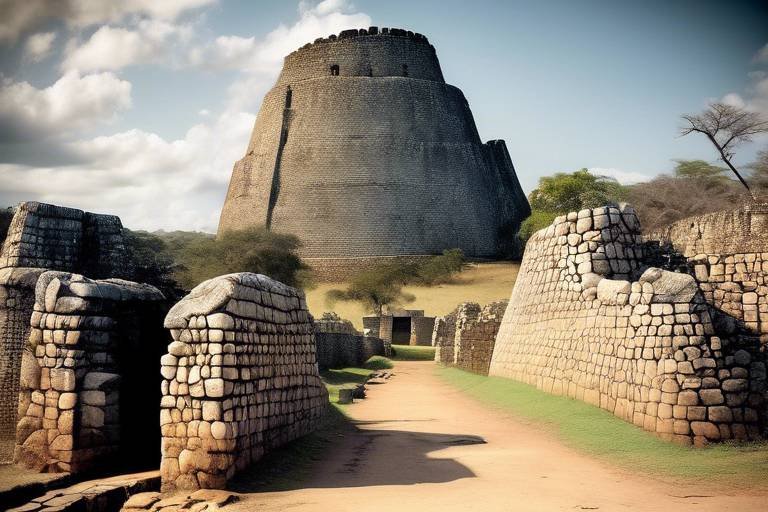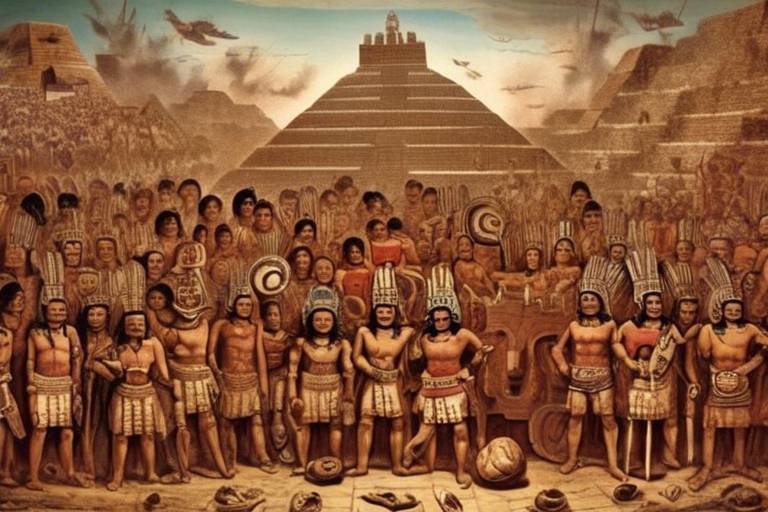Unraveling the Mysteries of the Hohokam Civilization
The Hohokam civilization, shrouded in mystery and intrigue, beckons us to delve into its enigmatic past. Who were these ancient people, and what secrets do their remnants hold? As we embark on a journey through time, we uncover a tapestry of culture, innovation, and resilience woven by the Hohokam.
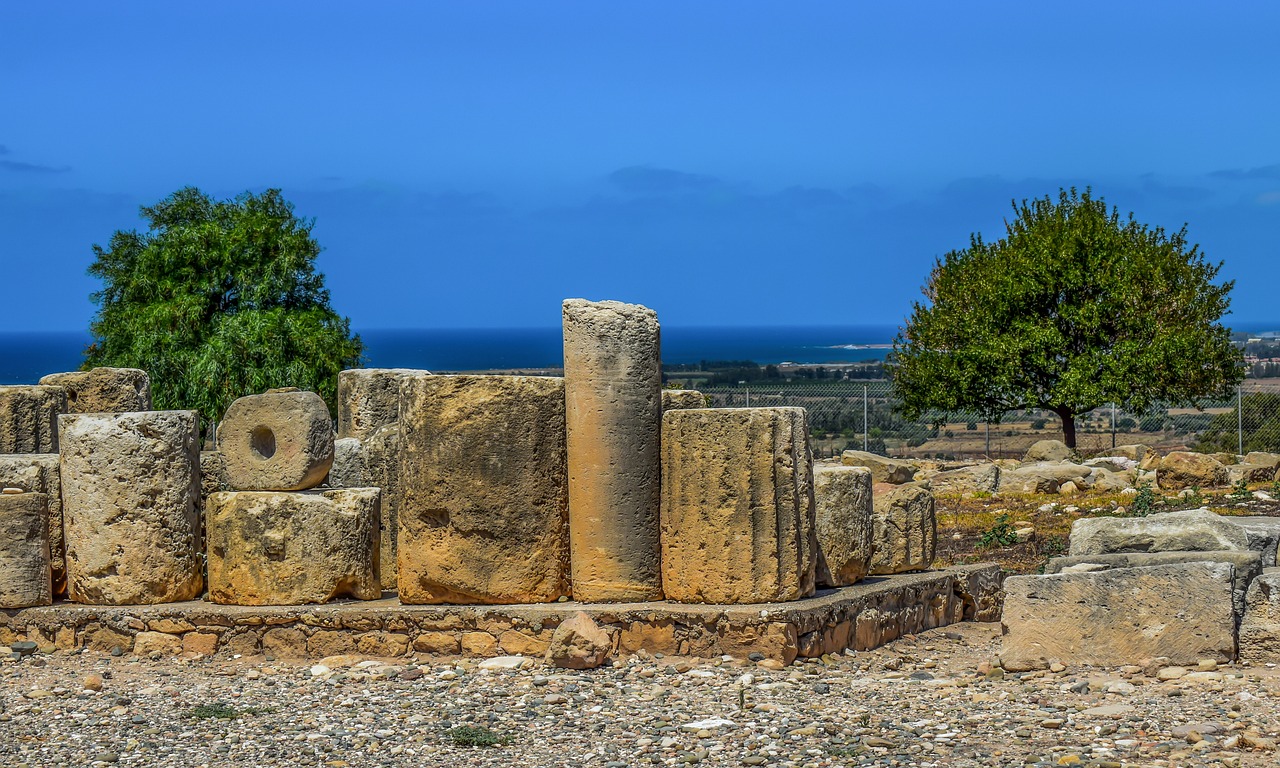
Origins of the Hohokam People
The origins of the Hohokam people, one of the ancient civilizations that flourished in the American Southwest, have long intrigued archaeologists and historians alike. The Hohokam are believed to have emerged around 200 AD in the region that is now known as Arizona. Various theories exist regarding their origins, with some suggesting that they were descendants of the ancient Ancestral Puebloans, while others propose connections to Mesoamerican cultures. The intricate pottery and advanced agricultural techniques of the Hohokam hint at a sophisticated society with roots deep in history.
One prevailing theory suggests that the Hohokam developed independently, harnessing their unique environment to create a thriving civilization. Their ability to cultivate crops in the arid desert landscape and construct elaborate canal systems for irrigation point to a people well-adapted to their surroundings. The Hohokam's resilience and ingenuity in utilizing natural resources underscore their deep connection to the land and their innovative approach to sustainability.
Through careful excavation and analysis of artifacts, researchers continue to piece together the puzzle of the Hohokam origins. The intricate designs on pottery, the layout of their settlements, and the remnants of ceremonial structures provide valuable insights into the cultural and social fabric of this ancient civilization. By delving into the origins of the Hohokam people, we gain a deeper understanding of the rich tapestry of indigenous cultures that once thrived in the Southwest.

Architectural Marvels of the Hohokam
When delving into the architectural marvels of the Hohokam civilization, one cannot help but be astounded by the ingenuity and sophistication displayed in their structures. At the heart of their architectural prowess lies the intricate canal systems that the Hohokam engineered, showcasing their advanced understanding of hydraulics and irrigation.
These canals, some stretching for miles, served not only as a means of transporting water to sustain their agricultural endeavors but also as a testament to the Hohokam's ability to manipulate the environment to suit their needs. The precision with which these canals were constructed is a testament to the Hohokam's engineering skills, especially considering they were built without the aid of modern technology.
Furthermore, the urban planning of Hohokam settlements is a testament to their foresight and organization. The layout of their villages and cities reflects a deep understanding of community living, with structures strategically placed to maximize efficiency and communal interaction. This urban design not only served practical purposes but also contributed to the social cohesion of the Hohokam society.
One of the most remarkable architectural achievements of the Hohokam is the Casa Grande Ruins, a massive structure that stands as a symbol of their architectural prowess. This four-story building, constructed using adobe bricks, showcases the Hohokam's ability to create monumental structures that have stood the test of time.
Moreover, the Hohokam were also adept at crafting ball courts, platforms, and ceremonial structures that served both practical and spiritual purposes. These architectural feats not only demonstrate the Hohokam's technical skills but also provide insights into their cultural practices and belief systems.
In conclusion, the architectural marvels of the Hohokam civilization stand as a testament to their innovation, creativity, and adaptability. Through their sophisticated canal systems, urban planning, and monumental structures, the Hohokam have left a lasting legacy that continues to intrigue and inspire researchers and visitors alike.

Hohokam Cultural Practices
The offer a fascinating glimpse into the daily lives and beliefs of this ancient civilization that thrived in the arid landscapes of the American Southwest. Central to the Hohokam society were their agricultural practices, which revolved around the cultivation of maize, beans, and squash. The Hohokam ingeniously utilized a sophisticated irrigation system of canals to channel water from the Salt and Gila Rivers, allowing them to sustain their crops in an otherwise challenging environment.
Religious rituals played a significant role in Hohokam culture, with evidence of ceremonial platform mounds and ball courts indicating a complex spiritual belief system. These structures were likely used for communal gatherings, ceremonies, and possibly even competitive games that held symbolic importance within the society. The Hohokam's reverence for nature is evident in their intricate pottery designs, which often featured motifs inspired by local flora and fauna.
Family and social structures were also integral to the fabric of Hohokam society. The extended family unit formed the basis of community life, with households sharing resources and responsibilities. Gender roles were clearly defined, with men primarily engaged in hunting and agriculture, while women were skilled in pottery making and other domestic tasks. This division of labor contributed to the overall harmony and functionality of Hohokam settlements.
Artistic expression was not limited to pottery alone; the Hohokam also excelled in creating intricate jewelry pieces using materials such as turquoise, shell, and copper. These adornments were not only decorative but also held symbolic meanings, reflecting the wearer's status, lineage, and spiritual beliefs. The craftsmanship and attention to detail in Hohokam jewelry highlight their artistic sophistication and cultural significance.
The Hohokam's cultural practices were deeply intertwined with their environment, shaping a unique way of life that adapted to the challenges of the desert landscape. By understanding and appreciating these customs, we gain valuable insights into the rich heritage of the Hohokam civilization and the enduring legacy they have left behind.

Trade and Exchange Networks
Trade and exchange networks were integral to the flourishing of the Hohokam civilization, enabling the movement of goods and ideas across vast distances. The Hohokam people engaged in extensive trade with neighboring cultures, exchanging commodities such as pottery, shells, turquoise, and other resources. Through these networks, they not only acquired valuable materials but also established connections that enriched their cultural practices and technological innovations.
One of the key trade routes of the Hohokam civilization is believed to have extended from the Salt River Valley in present-day Arizona to the Pacific Coast, facilitating the exchange of goods between coastal and inland communities. This trade network played a crucial role in the economic development of the Hohokam society, allowing for the distribution of surplus agricultural produce and specialized craft items.
Archaeological evidence suggests that the Hohokam traded with distant regions such as Mesoamerica, acquiring exotic items like macaw feathers and copper bells. These long-distance trade connections not only brought in rare and valuable goods but also fostered cultural exchange and the transmission of knowledge between different indigenous groups.
The Hohokam trade network was not limited to physical goods but also encompassed the exchange of ideas, beliefs, and social practices. Through interactions with neighboring cultures, the Hohokam people likely assimilated new technologies, agricultural techniques, and artistic styles, contributing to the diversity and vibrancy of their own civilization.
Furthermore, the trade and exchange networks of the Hohokam played a significant role in shaping their social structure and political organization. The accumulation of wealth through trade likely led to the emergence of social hierarchies within Hohokam society, with certain individuals or groups gaining prominence based on their control of trade routes and valuable resources.
In essence, the trade and exchange networks of the Hohokam civilization were not only channels for economic transactions but also conduits for cultural diffusion, innovation, and social transformation. By participating in extensive trade networks, the Hohokam people were able to thrive and adapt to changing circumstances, leaving a lasting legacy of interconnectedness and exchange that continues to intrigue researchers and historians today.
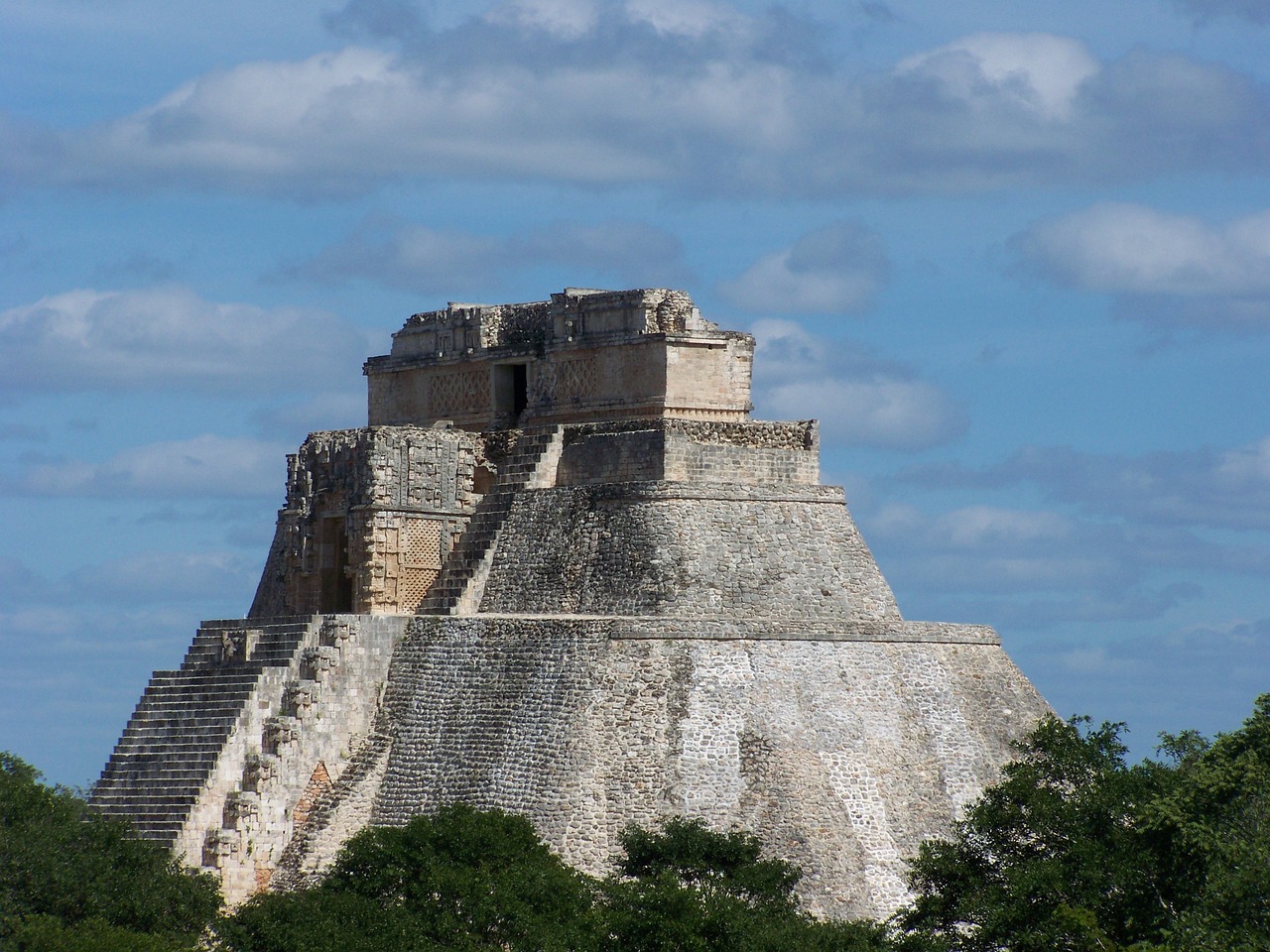
Decline of the Hohokam Civilization
As we delve into the intriguing history of the Hohokam civilization, we are inevitably drawn to the enigmatic decline that marked the end of their once-thriving society. The demise of the Hohokam civilization remains a subject of scholarly debate and speculation, with various theories posited to explain the factors that led to their eventual decline and the abandonment of their settlements.
One prominent theory suggests that environmental challenges played a significant role in the downfall of the Hohokam. The arid climate of the American Southwest posed formidable obstacles to agricultural sustainability, and prolonged droughts may have placed immense pressure on the Hohokam's agricultural practices, ultimately leading to food shortages and resource depletion.
Moreover, internal social and political dynamics within the Hohokam society may have also contributed to their decline. Conflicts over resources, power struggles, or shifts in leadership could have destabilized the once-cohesive community, leading to social unrest and the eventual fragmentation of Hohokam settlements.
Another factor that has been proposed is the impact of external influences, such as interactions with neighboring cultures or the arrival of new groups in the region. These interactions could have introduced new ideas, technologies, or diseases that disrupted the established way of life of the Hohokam people, contributing to their societal disintegration.
Archaeological evidence indicates that towards the end of the Hohokam civilization, there was a gradual abandonment of their settlements, with a notable decline in population and economic activity. The once-thriving urban centers and agricultural landscapes of the Hohokam were gradually deserted, leaving behind a legacy of mystery and unanswered questions that continue to intrigue researchers and historians to this day.

Artistic Expressions of the Hohokam
The artistic expressions of the Hohokam people offer a fascinating glimpse into their creativity and cultural significance. One of the most notable forms of artistic expression among the Hohokam is their exquisite pottery. The Hohokam were skilled potters who crafted intricate designs and patterns on their pottery vessels, showcasing their attention to detail and artistic flair. These vessels served both practical and ceremonial purposes, reflecting the importance of art in everyday life.
In addition to pottery, the Hohokam also excelled in the creation of jewelry. Using materials such as shell, stone, and turquoise, they crafted beautiful ornaments that were not only decorative but also symbolic. These pieces of jewelry were worn as adornments and likely held cultural and spiritual significance for the Hohokam people, illustrating the intersection of art and belief in their society.
Furthermore, the Hohokam expressed their artistic talents through rock art found in various locations across the American Southwest. Petroglyphs and pictographs created by the Hohokam depict a range of subjects, from geometric designs to representations of animals and human figures. These ancient artworks provide valuable insights into Hohokam beliefs, rituals, and storytelling traditions, serving as a visual record of their cultural heritage.
Moreover, the Hohokam's artistic endeavors extended beyond tangible objects to include architectural elements. The layout of Hohokam settlements, with their carefully planned canal systems and ceremonial structures, reflects a deep understanding of design and aesthetics. The integration of art into their urban spaces suggests that the Hohokam viewed architecture not just as functional but also as a form of artistic expression, blending beauty with utility.
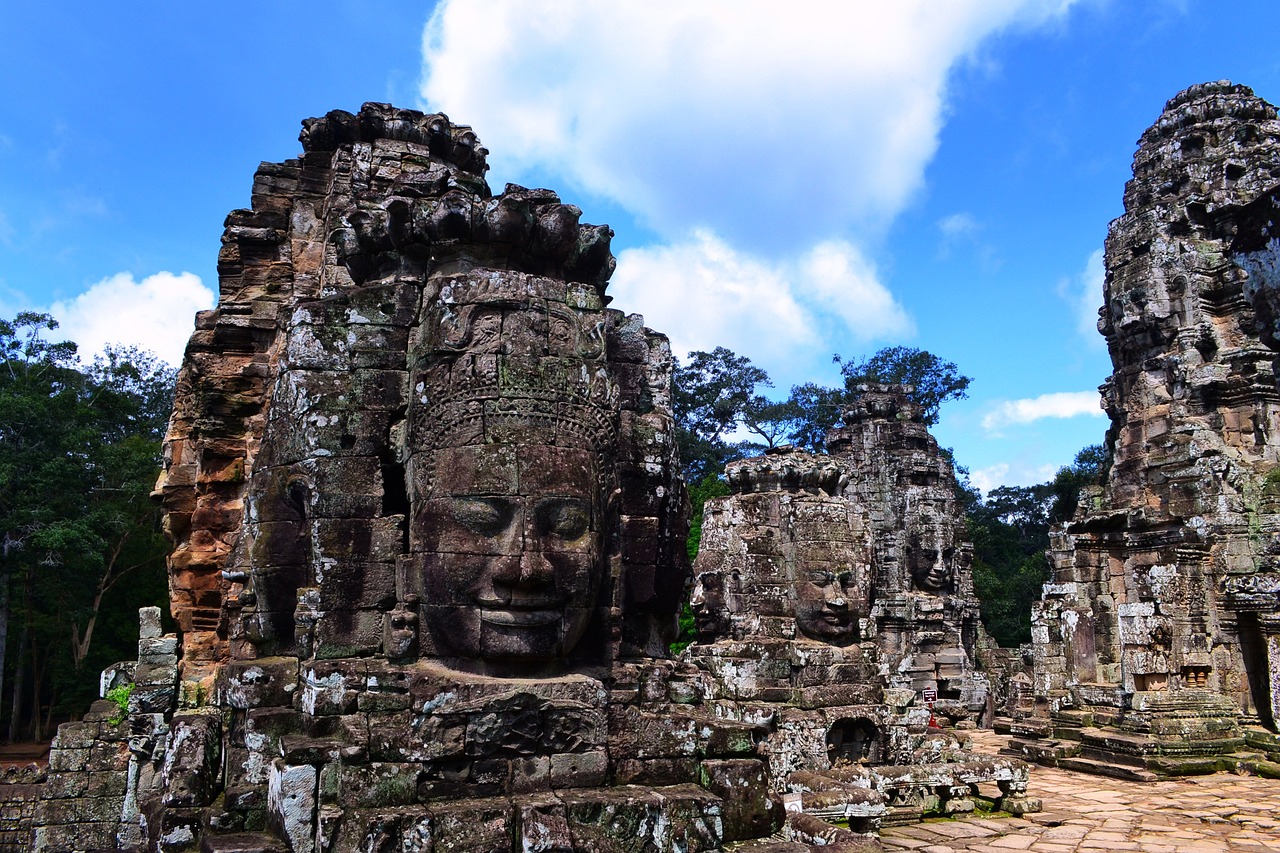
Recent Discoveries and Research
Recent archaeological excavations in the American Southwest have unveiled fascinating insights into the enigmatic world of the Hohokam civilization. Researchers have unearthed new evidence that challenges previous assumptions and opens up fresh avenues of exploration. One notable discovery includes the identification of previously unknown Hohokam settlements, expanding our understanding of the extent of their ancient urban centers. These findings have sparked renewed interest and excitement among scholars and enthusiasts alike, igniting a surge of new research initiatives.
Furthermore, advanced scientific techniques such as radiocarbon dating and isotopic analysis have provided valuable data for reconstructing the timeline of Hohokam cultural development. By analyzing artifacts and organic remains, researchers have been able to piece together a more detailed narrative of the civilization's rise and fall. This multidisciplinary approach has led to groundbreaking discoveries that challenge conventional wisdom and offer fresh perspectives on the complexities of Hohokam society.
Moreover, ongoing research efforts are focused on deciphering the intricate symbolism and meanings embedded in Hohokam artistic expressions. The intricate designs adorning pottery vessels, the symbolism of jewelry motifs, and the stylistic variations in architectural elements all provide clues to the cultural beliefs and practices of the ancient Hohokam people. By delving deeper into these artistic forms, researchers hope to unravel the spiritual and social significance behind these creative endeavors.
Collaborative projects between archaeologists, anthropologists, and indigenous communities have also played a crucial role in advancing our knowledge of the Hohokam civilization. By integrating traditional knowledge with modern scientific methods, researchers have gained a more holistic understanding of Hohokam cultural practices and societal organization. This inclusive approach not only enriches academic research but also fosters mutual respect and collaboration among diverse stakeholders invested in preserving the legacy of the Hohokam people.
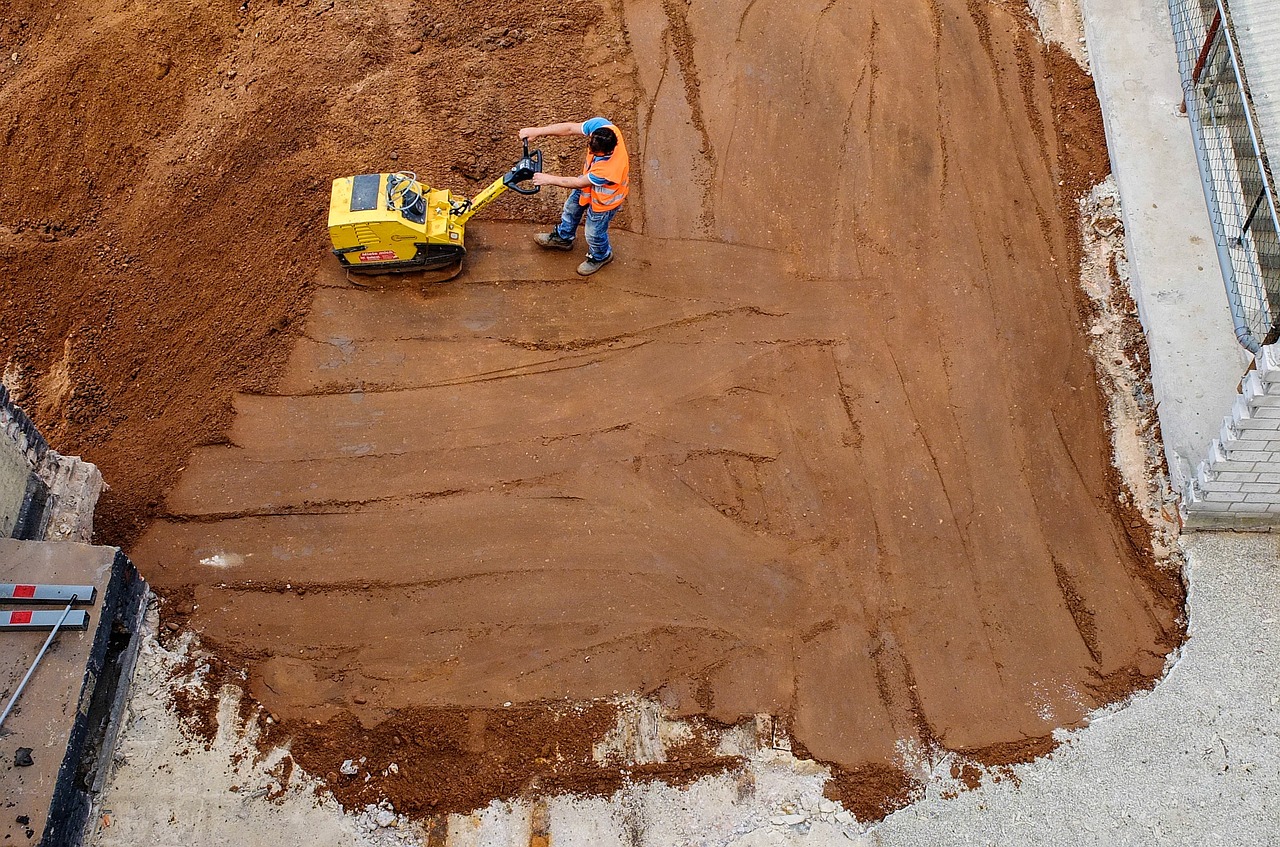
Legacy of the Hohokam Civilization
The legacy of the Hohokam civilization continues to captivate archaeologists, historians, and enthusiasts alike, offering a glimpse into the rich tapestry of ancient Native American cultures. Through their innovative practices and enduring influence, the Hohokam have left an indelible mark on the landscape of the American Southwest.
One of the most significant legacies of the Hohokam civilization lies in their remarkable architectural feats, particularly their sophisticated canal systems. These intricate networks of waterways not only sustained agricultural practices but also showcased the engineering prowess of the Hohokam people, setting a precedent for future civilizations in the region.
Furthermore, the cultural practices and artistic expressions of the Hohokam have provided valuable insights into the beliefs and values of this ancient society. From intricately crafted pottery to symbolic jewelry, the artistic legacy of the Hohokam reflects their deep connection to the natural world and spiritual realms.
Moreover, the trade and exchange networks established by the Hohokam played a pivotal role in shaping regional interactions and fostering cultural exchange. By facilitating the flow of goods and ideas across vast distances, the Hohokam contributed to the diverse tapestry of Native American cultures in the pre-Columbian era.
Despite the eventual decline of the Hohokam civilization, their legacy lives on through ongoing archaeological research and preservation efforts. Modern scholars continue to unravel the mysteries of the Hohokam, shedding light on their societal structures, economic practices, and technological innovations.
In conclusion, the legacy of the Hohokam civilization serves as a testament to the resilience and ingenuity of ancient Native American peoples. By delving into their history and cultural heritage, we not only honor the legacy of the Hohokam but also gain a deeper appreciation for the complexities of prehistoric societies in the American Southwest.
Frequently Asked Questions
- What does "Hohokam" mean?
The term "Hohokam" is believed to be derived from the O'odham word meaning "those who have gone." It refers to the ancient Native American culture that inhabited the American Southwest.
- How did the Hohokam create their canal systems?
The Hohokam were skilled engineers who constructed their intricate canal systems by utilizing simple tools such as digging sticks and baskets. These canals were vital for agriculture and water management in the arid desert environment.
- What were some of the main cultural practices of the Hohokam?
The Hohokam engaged in various cultural practices such as pottery-making, agriculture, trade, and religious ceremonies. Their society was characterized by a complex social structure and a deep connection to the land.
- Why did the Hohokam civilization decline?
The decline of the Hohokam civilization is thought to be influenced by factors such as environmental changes, resource depletion, social unrest, and external pressures. The exact reasons for their decline remain a subject of ongoing research and debate.
- What kind of artistic expressions did the Hohokam engage in?
The Hohokam were known for their exquisite pottery, intricate jewelry, and other forms of artistic expression. Their artwork often featured geometric designs, animal motifs, and symbols reflecting their cultural beliefs.
- What is the significance of recent discoveries in understanding the Hohokam civilization?
Recent archaeological findings and ongoing research efforts have provided valuable insights into the daily life, trade networks, and societal organization of the Hohokam. These discoveries contribute to a deeper understanding of this ancient civilization and its legacy.
- How has the legacy of the Hohokam civilization influenced contemporary perspectives on Native American cultures?
The legacy of the Hohokam civilization continues to shape our understanding of ancient Native American cultures and their contributions to art, architecture, agriculture, and social organization. Studying the Hohokam helps us appreciate the rich diversity and complexity of indigenous societies in the past.




